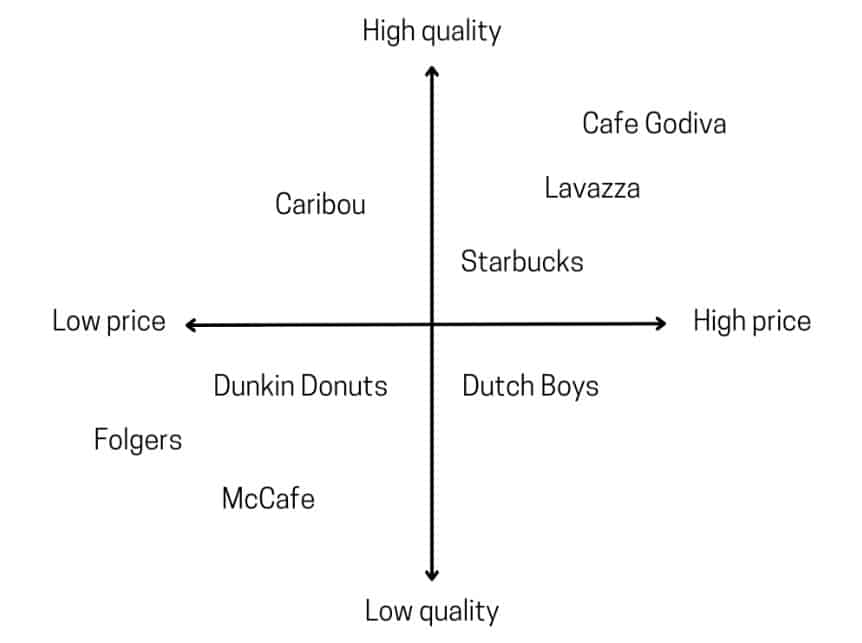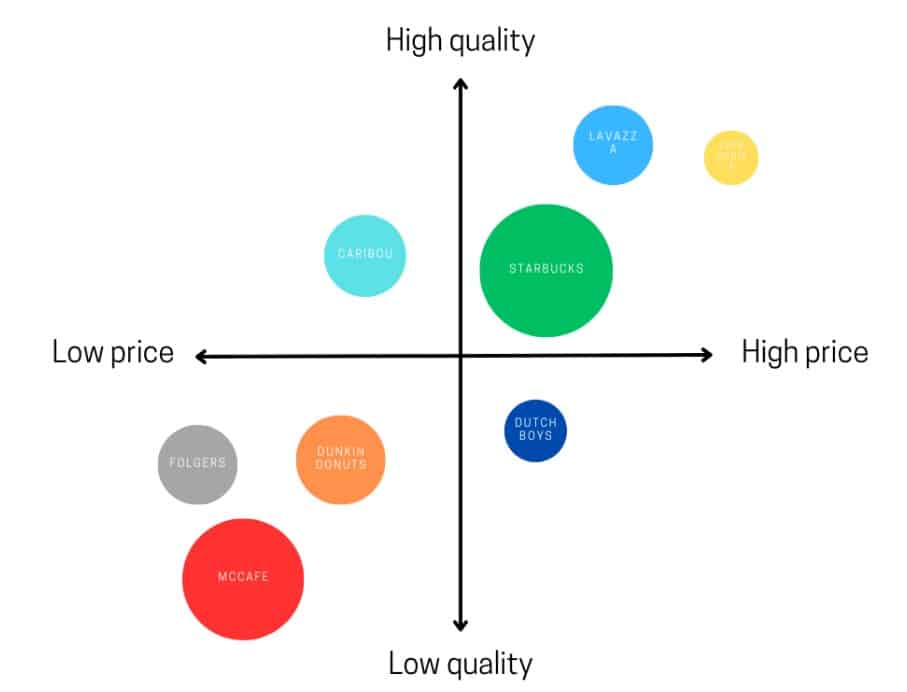All businesses strive to stand out among competitor brands and leave a lasting impression in the minds of their target customers. For PR professionals, improving a brand’s market positioning while managing customer perceptions is their bread and butter.
But in today’s increasingly competitive landscape, how can you create a strong brand positioning strategy that takes into account a company’s current position and future goals?
Enter the brand positioning map.
Below, we’ll give you the tools and insights to create one and thrive in a hyper-connected world with changing public perceptions.
Brand positioning defined
Brand positioning involves placing your brand in the minds of your customers. It’s the sum of your efforts to differentiate your business from its competitors.
When a consumer views your brand in a positive light and believes it has value and credibility, you have successfully positioned it in their mind. These attributes make your business unique and create a special place for your brand.
What is a brand positioning map and why does it matter?
A brand positioning map is a visual representation—often a chart or diagram—showing businesses how their target audience views their brand compared to competitors. It displays the brand’s unique position in a market or industry.
Today’s fast-paced, competitive business environment requires a clear brand position. While strategies like listing in online directories can boost visibility, they are just one piece of the puzzle.
Here’s why you need a brand positioning map:
- Understanding your customers: Knowing where your brand is in the minds of consumers helps you tailor your PR strategy and marketing efforts. You can directly address audience needs and customer pain points.
- Flexibility: Markets and consumer tastes change. A map lets you adjust your strategies as needed.
- Consistency: Brand maps help you to maintain consistency in your messaging, whether in ads or customer interactions. Trust and credibility come from consistency, which can boost revenue.

Image sourced from influencermarketinghub.com
8 steps for creating a brand position map
Step #1: Sketch out your brand’s positioning map
Create a simple grid or chart with two axes. Label one with a relevant attribute (e.g., “price” or “quality”) and the other with a scale (e.g., “low” to “high”). Place your brand and competitors on this map based on how your target market views them.
Here’s an example based on American coffee shop brands:

Original image created by author
Step #2: Select two features to concentrate on
A brand position map should include two industry-relevant and audience-relevant attributes. Here are two common ones, along with an example of how to use them:
- Price: Plot the price range from “affordable” to “premium” on one axis.
- Quality: Do the same for quality on the second axis, from “basic” to “high-end.”
For example, a boutique PR firm that focuses on crisis management may market themselves as “premium quality” and “high price.” A more general PR firm that caters to small businesses may market itself as “basic quality” and “affordable price”.
Step #3: Place your brand and the competition in their respective positions
Place your brand’s competitors in the quadrant that best reflects where they stand in the eyes of consumers. You can do this with circles. Make the circle larger if their market share is higher than other competitors’.

Original image created by author
Let’s consider another example of a company offering Voice over Internet Protocol (VoIP) services. If Competitor A’s VoIP value far exceeds Competitor B’s, then its position circle would be slightly larger.
The next step is to add a positioning map circle to represent your position. The size of your circle depends on your market share versus competitors.
Be objective when comparing your company to the competition. People tend to exaggerate the advantages of their own brand while downplaying those of their rivals. Employ an external market research firm to get accurate and impartial information about customer perceptions. You can also send out surveys to hear from customers directly.
Step #4: Determine a positioning gap using your brand positioning chart
Filling out your positioning map will reveal your brand’s market position. The next step is to use your two-attribute matrix to identify possible gaps and opportunities.
For example, let’s consider a hypothetical positioning chart for “ReputationGuardians” and “PRSHield Inc”. The chart uses “Expertise” and “Price” attributes:
- PRSHield Inc. is positioned as “high expertise” and “high price”.
- ReputationGuardians is positioned as “moderate expertise” and “moderate price”.
Interpretation: PRSHield Inc. leverages its advanced expertise to demand a high price, while ReputationGuardians positions itself as a cheaper option with moderate expertise.
Positioning Gap: The positioning gap is visible here. ReputationGuardians could offer affordable “high expertise” services to clients who value expertise but want cost-effective solutions. This gap suggests ReputationGuardians can position itself as “high expertise” and “competitive price”.
Step #5: Change your focus attributes
Your first attempt to create a positioning map may not reveal any market gaps or growth opportunities. If that is the case, change your initial map by swapping out either of the attributes you used previously.
You will get better results if you focus on the attributes that your target audience values. These could include speed, ease-of-use, or durability. Just make sure to always use attributes that set your product or service apart from the competition.
Step #6: Compile your findings into a positioning statement
Now, start writing a mission statement. This is typically one paragraph long and tells the customer why you’re their best option.
For example, as a software vendor, your findings might reveal that your brand resolves a key market gap, like remote computer access. Leverage this in your mission statement to show your customers how they will benefit from what you are selling.
Step #7: Think of a catchy slogan or strapline
Create a memorable strapline, slogan, or tagline, and use this to market your brand and draw attention to its unique selling points. It should be as descriptive as possible without being too long. For example, “Unlocking Efficiency: Your Remote Desktop for Android Phone Solution!”

Image sourced from Adobe.com
Step #8: Review and get feedback
Test and experiment with your positioning statement after creating it. Collect customer feedback to understand its effectiveness and adapt if necessary.
Charting your success
Creating a brand positioning map is essential for any business. It gives you an overview of your performance compared with the competition. This provides insights that are valuable for improving your products and services.
PR professionals can use these insights to develop more targeted strategies, boost client engagement, and enter previously untapped markets. Adopting these standards for your PR strategy in 2023 and beyond can be the difference between surviving and thriving in the dynamic world of public relations.








